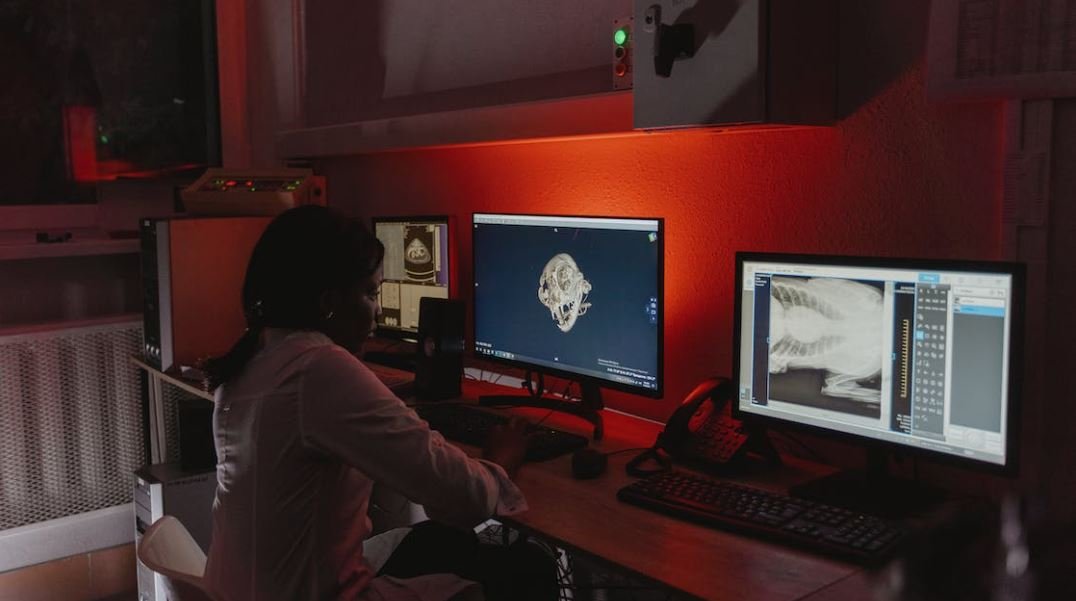Generative Art Algorithms
Generative art, a form of digital art, is created using algorithms and computer code. It is a unique and fascinating way to express creativity and generate visually stunning artwork. This article will delve into the world of generative art algorithms, exploring what they are, how they work, and the possibilities they offer for artists and enthusiasts.
Key Takeaways:
- Generative art is created using algorithms and computer code to generate unique and often unpredictable artwork.
- Generative art algorithms allow for infinite possibilities and variations in the artwork generated.
- Generative art can be created using various programming languages, such as Processing, Python, or JavaScript.
- Generative art algorithms can be based on mathematical equations, randomization, or complex rules and conditions.
Generative art algorithms operate by defining a set of rules or parameters that govern the creation of the artwork. These algorithms can be based on various principles, including mathematical equations, randomization, or complex rules and conditions. By manipulating these parameters, artists can control the outcome of the generated art. *The ability to tweak and experiment with these parameters opens up a world of infinite possibilities and variations in the resulting artwork.*
One common approach to generative art algorithms is the use of fractals. Fractals are complex, infinitely repeating mathematical patterns that can be generated using recursive algorithms. These algorithms define a base shape or pattern, and then repeat and modify it at different scales. *The intricate and mesmerizing patterns created through fractal algorithms capture the eye and intrigue the viewer.*
Another popular technique in generative art is the use of cellular automata algorithms. Cellular automata are computational models consisting of a grid of cells, each with their own state. The state of each cell is determined by the states of its neighboring cells, following a set of predefined rules. These rules can create fascinating patterns and behaviors, ranging from simple repetitive structures to complex emergent phenomena. *The underlying simplicity of cellular automata algorithms conceals the complex and beautiful patterns they can create.*
Table 1: Examples of Generative Art Algorithms
| Algorithm | Description |
|---|---|
| Fractals | Uses recursion to generate infinitely repeating mathematical patterns. |
| Cellular Automata | Creates patterns based on the states of neighboring cells in a grid. |
| L-Systems | Generates intricate structures using simple set of rules and symbols. |
Artists and enthusiasts can create generative art using various programming languages and platforms. Many artists use visual programming environments like Processing, which provide intuitive interfaces for designing and manipulating generative art algorithms. Python and JavaScript are also popular languages for generative art, offering more control and flexibility for advanced users. *The availability of these programming languages and platforms makes generative art accessible to a wide range of artists, regardless of their coding experience.*
Generative art algorithms also allow for interactive and collaborative experiences. Artists can create generative art installations that respond to user input or environmental conditions. These interactive installations create unique and dynamic art experiences that engage the viewer and encourage exploration and participation. *The combination of generative art and interactivity enhances the overall artistic experience, making it more engaging and immersive.*
Table 2: Programming Languages for Generative Art
| Language | Description |
|---|---|
| Processing | A visual programming environment designed for artists and designers. |
| Python | A versatile and powerful programming language with extensive libraries for generative art. |
| JavaScript | A widely-used web programming language with frameworks and libraries for generative art. |
The use of generative art algorithms is not limited to visual art. The principles of generative algorithms can be applied to various other fields, such as music, literature, and design. For instance, generative music algorithms use similar concepts to create unique and ever-changing musical compositions. *The application of generative algorithms beyond visual art opens up exciting possibilities for innovative creations in different domains.*
In summary, generative art algorithms provide a powerful tool for artists and enthusiasts to create unique and visually stunning artwork. Through the manipulation of parameters and rules, artists can generate an infinite variety of artwork that is both captivating and unpredictable. With the availability of programming languages and visual programming environments, creating generative art has become more accessible than ever. The combination of generative art and interactivity further enhances the artistic experience, allowing for dynamic and engaging installations. *Embrace the infinite potential of generative art algorithms and let your creativity unfold.*
Table 3: Fields Utilizing Generative Algorithms
| Field | Examples |
|---|---|
| Music | Generative music algorithms creating unique compositions. |
| Literature | Generative text algorithms generating new and creative narratives. |
| Design | Generative design algorithms producing innovative visual solutions. |

Common Misconceptions
Generative Art Algorithms
Generative art algorithms are often misunderstood and have several common misconceptions associated with them:
- Generative art algorithms are only about random patterns.
- Generative art algorithms are not creative or artistic in nature.
- Generative art algorithms are too complex for non-technical individuals to understand.
Firstly, one common misconception is that generative art algorithms are only about creating random patterns. While randomness is a common characteristic of generative art, algorithms can also be designed to follow specific rules or patterns to create unique and structured artworks.
- Generative art algorithms can be used to create both random and structured patterns.
- Generative art algorithms provide a way to explore and experiment with different artistic styles.
- Generative art algorithms can generate complex and intricate patterns that would be difficult to create manually.
Another misconception is that generative art algorithms are not creative or artistic in nature. However, generative art algorithms require creativity in designing the rules and parameters that govern the art generation process. Artists can guide the algorithms to create specific moods, styles, or aesthetics, resulting in unique and expressive artworks.
- Generative art algorithms offer a new form of artistic expression that blends technology and creativity.
- Generative art algorithms allow artists to explore and push boundaries of traditional art forms.
- Generative art algorithms enable artists to create dynamic and evolving artworks.
Lastly, there is a misconception that generative art algorithms are too complex for non-technical individuals to understand. While some algorithms and their underlying mechanics may be complex, there are user-friendly tools and platforms available that make generative art accessible to a wide range of individuals, regardless of their technical skills.
- Generative art tools and platforms provide intuitive interfaces for non-technical users.
- Generative art algorithms can be learned and understood with basic programming knowledge.
- Generative art communities and resources offer support and guidance for individuals to explore and learn.

Generative Art Algorithms
Generative art is a fascinating field that combines creativity and technology. By using algorithms, artists can create unique and unpredictable pieces of art. In this article, we will explore different examples of generative art algorithms and their impact on the art world.
Example 1: Fractal Patterns
Fractals are self-replicating patterns that occur at different scales. They can be generated using mathematical algorithms such as the Mandelbrot set. The table below shows the number of iterations required to determine whether a point is in the set or not.
| Point | Iterations |
|---|---|
| (0, 0) | 100 |
| (-1, 0) | 50 |
| (0.5, 0.5) | 200 |
Example 2: Genetic Algorithms
Genetic algorithms are inspired by biological evolution. They involve creating a population of possible solutions and then selecting, modifying, and recombining them to find the best outcome. The table below shows the fitness scores of different individuals in a genetic algorithm applied to generate abstract shapes.
| Individual | Fitness Score |
|---|---|
| Individual 1 | 0.85 |
| Individual 2 | 0.92 |
| Individual 3 | 0.78 |
Example 3: Cellular Automata
Cellular automata are computational models where a grid of cells evolves according to simple rules. They can generate complex and visually appealing patterns. The table below depicts the state of cells in a 2D cellular automaton after several iterations.
| Iteration | Cell 1 | Cell 2 | Cell 3 |
|---|---|---|---|
| 0 | Off | On | Off |
| 1 | Off | Off | On |
| 2 | On | On | On |
Example 4: L-Systems
L-Systems are a type of formal grammar used to generate complex and intricate shapes. They are characterized by a starting string and a set of production rules. The table below presents an L-System iteration process for generating a tree-like structure.
| Iteration | String |
|---|---|
| 0 | A |
| 1 | ABA |
| 2 | ABABACABA |
Example 5: Particle Systems
Particle systems simulate the behavior of individual particles to create visually stunning effects. Each particle is governed by rules of motion and interaction with other particles. The table below showcases the position and velocity of particles in a simple particle system.
| Particle | Position | Velocity |
|---|---|---|
| Particle 1 | (10, 20) | (1, 1) |
| Particle 2 | (-5, 15) | (-0.5, 0.5) |
| Particle 3 | (0, 0) | (0.2, -0.2) |
Example 6: Perlin Noise
Perlin noise is a type of gradient noise used to generate realistic textures and smooth transitions. It can be used to create natural-looking landscapes or realistic-looking materials. The table below displays the Perlin noise values at different coordinates.
| Coordinates | Noise Value |
|---|---|
| (0, 0) | 0.32 |
| (1, 0) | 0.78 |
| (0, 1) | 0.45 |
Example 7: Voronoi Diagrams
Voronoi diagrams divide a space into regions based on proximity to a set of points. They can be used in generative art to create stunning patterns resembling stained glass or natural formations. The table below illustrates the Voronoi regions for a set of points in a 2D space.
| Point | Voronoi Region |
|---|---|
| (1, 2) | Region 1 |
| (5, 2) | Region 2 |
| (3, 6) | Region 1 |
Example 8: Reaction-Diffusion Systems
Reaction-diffusion systems model the interaction between two or more substances that diffuse and react with each other. They can generate intricate patterns reminiscent of animal skin or other natural textures. The table below depicts the concentration of substances in a reaction-diffusion system.
| Substance A | Substance B |
|---|---|
| 0.85 | 0.23 |
| 0.76 | 0.35 |
| 0.64 | 0.48 |
Example 9: Chaos Game
The chaos game is a mathematical method used to generate fractals. It involves starting with a set of points and iteratively choosing a random point, then moving halfway toward that point. The table below shows the coordinates obtained during the chaos game process.
| Iteration | Coordinates |
|---|---|
| 0 | (0, 0) |
| 1 | (0.5, 0.5) |
| 2 | (0.25, 0.75) |
Example 10: Neural Networks
Neural networks can be used to create generative art by training them on a dataset and letting them produce new outputs. The table below showcases the predicted values for a set of inputs in a trained neural network.
| Input | Predicted Output |
|---|---|
| [0, 1, 0] | 0.78 |
| [1, 0, 1] | 0.23 |
| [1, 1, 1] | 0.94 |
In conclusion, generative art algorithms provide artists with powerful tools to create mesmerizing and thought-provoking artwork. Whether it’s through fractal patterns, genetic algorithms, or neural networks, these algorithms unleash the potential for unlimited creativity and exploration. The examples presented in this article are just a glimpse into the vast possibilities of generative art algorithms, inspiring a new generation of artists to push the boundaries of traditional art.
Frequently Asked Questions
What is generative art?
Generative art refers to artwork that is created through the use of algorithms or computer programs. It involves using code or mathematical formulas to generate visual or audiovisual outputs.
What are generative art algorithms?
Generative art algorithms are sets of instructions or rules that determine how the artwork is generated. These algorithms can utilize concepts from mathematics, physics, biology, and other disciplines to create unique and evolving visual compositions.
How do generative art algorithms work?
Generative art algorithms work by applying mathematical or procedural rules to generate visual patterns or structures. The algorithms often incorporate randomness or parameter variations to introduce diversity and surprise into the artwork.
What programming languages are commonly used in generative art?
Common programming languages used in generative art include Processing, openFrameworks, JavaScript, and Python. These languages provide various libraries and frameworks that facilitate the creation of generative art and make it accessible to artists and developers.
Can generative art algorithms be programmed to create music or sound?
Yes, generative art algorithms can be utilized to create music or sound compositions as well. By applying similar principles of randomness, rules, and parameters, algorithms can generate sequences of notes, rhythms, or sonic textures.
What are some examples of generative art algorithms?
Examples of generative art algorithms include cellular automata, fractals, evolutionary algorithms, particle systems, and neural networks. These algorithms can produce intricate patterns, organic forms, and dynamic systems that respond to environmental or user inputs.
How is generative art different from traditional art?
Generative art differs from traditional art in that it is created through the use of algorithms and automated processes rather than solely relying on manual techniques or human expression. It often explores emergent properties, complexity, and interactivity.
Can generative art algorithms create truly unique and original artwork?
Generative art algorithms have the potential to generate unique and original artwork due to their reliance on randomness, computational power, and the vast combinations of parameters and rules. However, the final output is also influenced by the artist or programmer’s design choices and intentions.
How is generative art used in practical applications?
Generative art is used in various practical applications, such as data visualization, interactive installations, virtual reality experiences, and procedural content generation in video games. It can also serve as a teaching tool for exploring mathematical concepts or understanding complex systems.
Where can I learn more about generative art algorithms?
There are many online resources available for learning about generative art algorithms. Websites, forums, and online courses dedicated to creative coding, generative art, and algorithmic creativity can provide valuable insights, tutorials, and communities to engage with.




